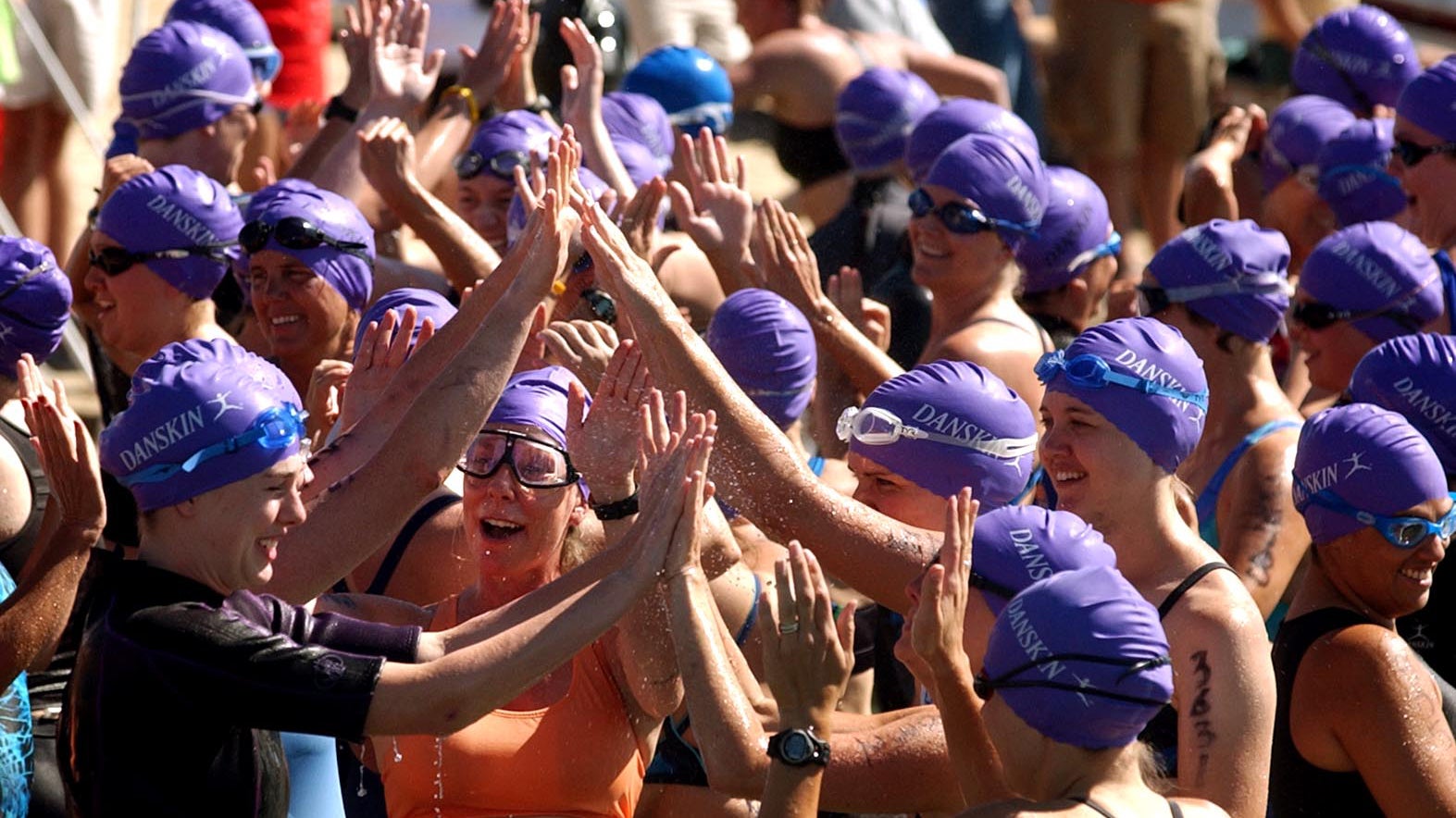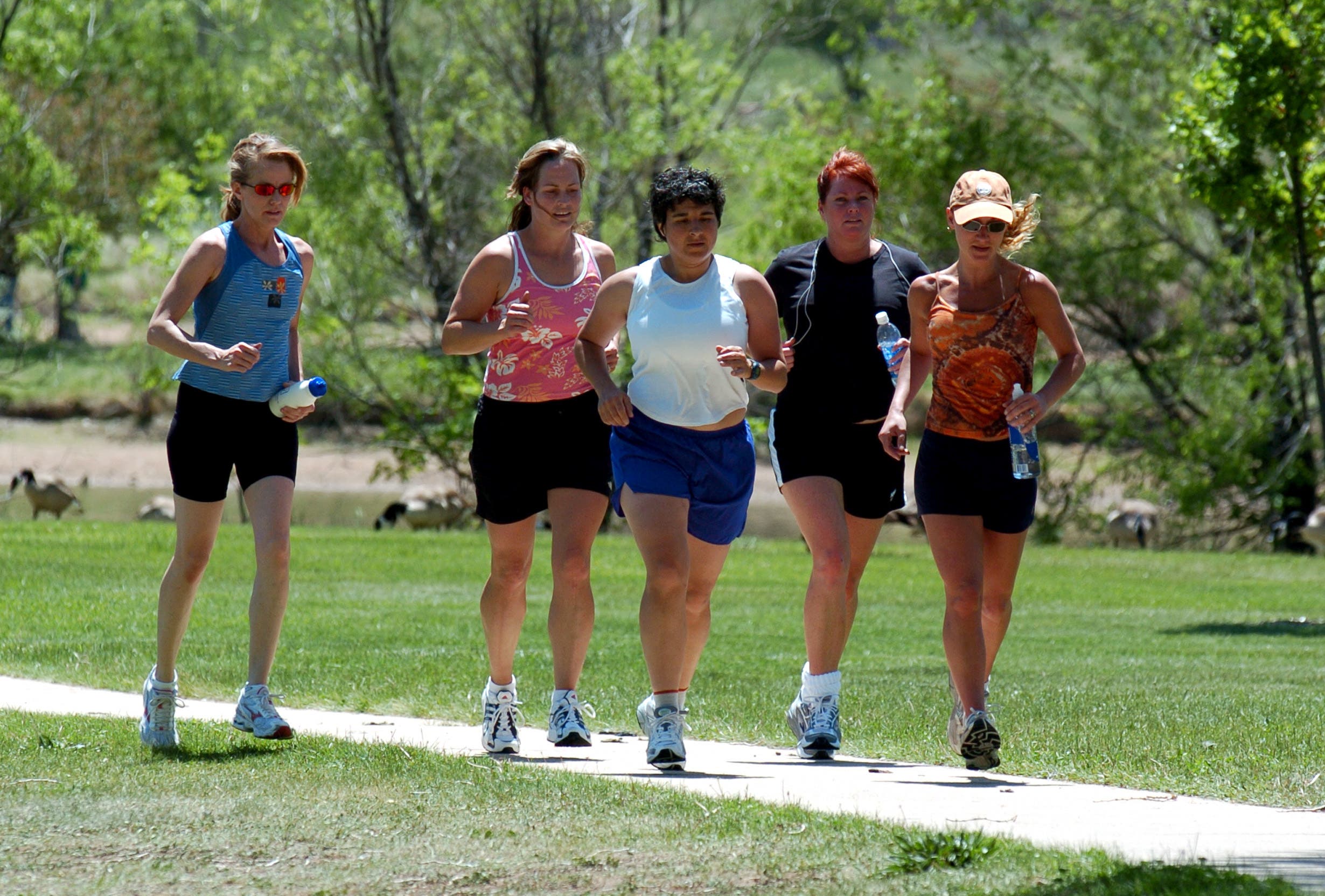Recalled: The First Women’s-Only Triathlon Series

Women compete at the 2004 Danskin Women's Triathlon Series in Aurora, Colorado. (Photo: Helen H. Richardson/The Denver Post via Getty Images)
Chat with any woman who competed in a triathlon in the 1990s or the aughts and chances are they’ve done a Danskin tri. Or at least know someone who has. After all, the very first women’s-only triathlon series served as an entry point for thousands of female triathletes, and ultimately helped to narrow the gender gap in multisport.
Around 1990, triathlon in the United States was booming—but mostly among men. In fact, women comprised just 25 percent of the total triathletes in the U.S. at the time. Judy Flannery was among a core group of leaders in the sport of triathlon who wanted to shift those stats. After starting the sport at 47 as a mother of five, she went on to win six national titles and four world titles in her age group. And as the first chairwoman of the women’s commission of USA Triathlon, she was an “accomplished recruiter who charmed thousands of women into taking up the sport.” This included playing a pivotal role in bringing the Danskin Triathlon Series to the masses by persuading the group to make the race USAT-sanctioned, and thus, help popularize the event. (An effort, among other accolades, which earned Flannery, who was tragically killed while biking in 1997, a posthumous induction into the USAT Hall of Fame).
Not to mention the initial series in 1990, set for Long Beach, Calif., San Jose, Calif., and White Plains, N.Y. garnered some serious media attention. The idea of a women’s-only triathlon was novel, and it had brand recognition at a time when big-time sponsorships for female athletic events were hard to come by (case in point: that same year, the hosiery brand L’eggs withdrew its longtime title sponsorship of the famed MiniMarathon in New York City). Adding to its allure? Gregory Rorke, Danskin’s president at the time and an Ironman triathlete himself, recruited marketing firm CAT Sports to develop the series. Helmed by Carl Thomas, the firm had produced over 25 televised triathlon events for ESPN, NBC, and other national syndications. This leveled up the series and drew the attention of some of the biggest names in the sport, including “Queen of Kona” Paula Newby-Fraser.
But even though there was the glitz—and the prize purse—to attract star triathletes (in later years, winners included world champs like Karen Smyers, Michellie Jones, and Newby-Fraser) the Danskin series was decidedly for beginners. The sprint distance—a half-mile swim, followed by a 12.4-mile bike segment, and a 3.1-mile run—reflected the series’ goal of reducing the intimidation factor often associated with triathlon and encouraging women of all levels to enter.
RELATED: A Brief History of Women in Triathlon

And enter they did: When the first-ever Danskin Women’s Triathlon hit the sandy shores of Long Beach, Calif. in June of 1990, 150 women plunged into the Pacific. The following month, another 250 females raced around White Plains, N.Y. By 1991, San Diego was added to make it a four-stop series. And it continued to grow from there. At its height, the series had events in eight cities, with some 20,000 women crossing the finish lines each year, making it not only the first women’s only triathlon race series, but the largest and longest-running sprint distance multi-sport series in the world. The Danskin momentum spurred on other women’s-only race series around the country, including Trek Women, SheRox, and Iron Girl.
In 2012, the Ironman Corporation purchased the Danskin Series and replaced it with the Iron Girl Series, thus ending the dance company’s 22-year reign in the multisport world. Though a disparity between genders remains in triathlon (women make up only 39 percent of USAT members, according to 2019 stats), there’s no doubt that the Danskin races helped narrow that gap. And while the Danskin name is no longer attached to any triathlons, the legacy and spirit of the series—and those like Flannery, who championed it along the way—remained intact.
RELATED: Commentary: Do We Still Need Women’s-Only Triathlon Races?